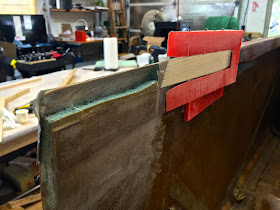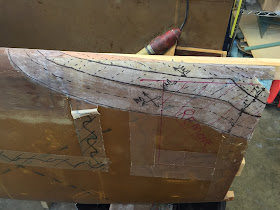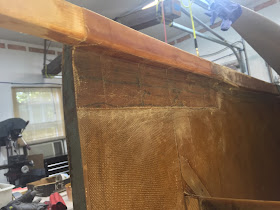Heated Pitot power supply
 |
| Pitot power supply housing |
Technically it is no longer a voltage regulator, but I decided to keep the title series going to make it easier to follow my quest to intelligently power the heated Pitot tube, so please excuse the title.
As you might remember, the last time I took a stab at this I had reached unsatisfactory results after testing my own voltage regulator based power supply design.
The biggest issue was that the air blast simulating the flight environment sapped way too much heat from the tube, rendering it useless. On top of that, time to reach full heat was also substandard, taking up to 12 minutes to reach 200ºF.
In other words, while I successfully tamed the heat to the Pitot tube, I could not control it as I needed to.
Looking back to a comment from a reader at the bottom of “Voltage regulator - part 1”, I started thinking that perhaps I could program a micro-controller (basically a tiny computer) to purposefully turn on and off the full battery voltage to the Pitot tube in order to reach my desired temperature more quickly.
Not only that, but I might be able to use a thermocouple to report back the actual temperature of the probe to the computer, and cleverly adjust the power output based on that information. I could then automatically add more power ON time for decreases in temperature due to higher airspeed, rain, or icing conditions, or more power OFF time for the opposite set of circumstances, like a raise in ambient temperature, or a slower speed (slower air blast) during the approach and landing phase of the flight.
It was worth a try, so I started freshening up my C++ skill set, this time as it related to micro-controllers.
 |
| Pretty good book, however prior C++ knowledge is definitely advantageous. |
Believe me when I say the title of this book was misleading, it definitely took more than 24 hours to get it all figured out, but from what I learned I was hopeful I had a better path to reach my goal.
What I would need to test this idea were an Arduino-style micro-controller, a thermocouple, a 10 amp relay to handle the full 7 amps coming from the battery all at once, and a breadboard.
 |
| Everything is held together by a custom 3D printed base |
The system worked, and I could control the temperature at will from ambient temperature to the full 700ºF that the full ON battery power is capable of. Of course the software took the longest to get right, and went through many revisions, but I am happy with it now.
In a later version of this system, I added a second thermocouple to be buried into the foam of the Long EZ’s nose, right outside of the G10 Pitot tube insulator. This second sensor makes sure that if there were any high temperatures reaching the foam, the probe’s heat would get switched to a lower power mode and not burn up the airplane’s nose.
 |
| Note the 2 thermocouples |
The nicest feature of this new system is its ability to react dynamically to changes in the environment without input from the pilot, and maintain any desired temperature within approximately ±15ºF, after a very short adjustment period.
Let’s take a look at some test results…
 |
| These test results are an order of magnitude better than those of the voltage regulator |
The three series represent different sampling rates of the thermocouple, with the highest one generating the most precise tracking of the set temperature of 200ºF as expected.
Completely satisfied with the results of these tests, I started prepping for the first test unit, using an even smaller microprocessor.
 |
| CAD drawing of the interior of the planned test unit |
Eventually, even this layout will have to be shrunk to better fit the small confines of the EZ’s nose.
 |
| Zortrax M200 delivering the goods in ABS plastic |
 |
| Testing the layout in real life |
 |
| All wired up and ready to go |
 |
| Vented enclosure cover |
For this test unit, I am also planning on adding a cockpit display of Pitot and Foam temperatures using a serial OLED 1.5" (3.8 cm) color display.
Stay tuned…
















































